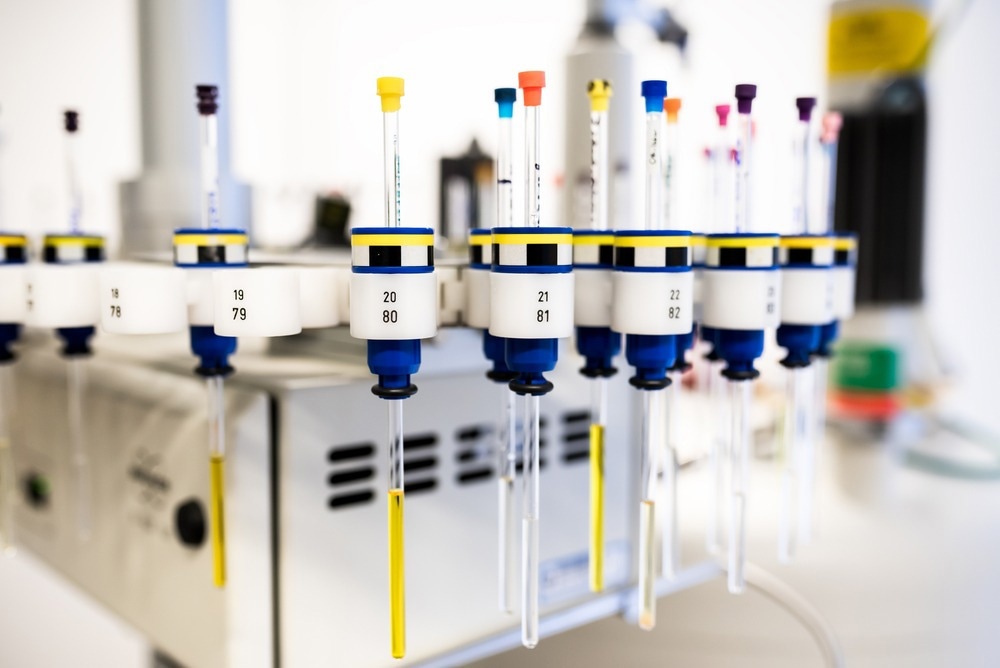In a recent study published in Nature Medicine, researchers explored the potential of a nuclear magnetic resonance (NMR) spectroscopy-based metabolomic platform to estimate the risks for the onset of several medical conditions.
 Study: Metabolomic profiles predict individual multidisease outcomes. Image Credit: Forance/Shutterstock
Study: Metabolomic profiles predict individual multidisease outcomes. Image Credit: Forance/Shutterstock
Background
Prompt identification and prevention of risk factors associated with the development of medical conditions are critical. In recent times, metabolomic analyses have been performed to identify high—risk individuals; however, the metabolic data has been considered inadequate for incident disease risk estimation. NMR spectroscopy enables rapid and relatively cost-effective molecular assessments compared to other metabolomic techniques such as mass spectroscopy.
About the study
In the present study, researchers investigated whether NMR spectroscopy-based serological metabolomic profiles could reflect the true physiological state of individuals and add to clinical biomarkers for estimating the risks of developing 24 conditions, including vascular, metabolic, respiratory, neurological, and musculoskeletal disorders and cancers across 22 centers.
A neural network (NN) was trained to simultaneously learn metabolomic states (METs) specific for medical disorders from 168 metabolic markers quantitatively assessed among 117,981 individuals with a follow-up of 1,400,000 million individual years from the United Kingdom (UK) Biobank (BB). To validate the model’s findings, four different cohorts were analyzed, i.e., the Rotterdam Study cohort, the Whitehall II cohort, the PROspective Study of Pravastatin in the Elderly at Risk (PROSPER) cohort, and the Leiden Longevity PAROFF study cohort were analyzed using the same 1H-NMR metabolomics assay.
In addition, three BBMRI-NL consortium cohorts were analyzed. The markers included fatty acid and amino acid metabolites associated with fluid balance and carbohydrate metabolism. Their association with conventionally used clinical markers such as creatinine, albumin, and glucose was assessed. Cox proportional hazard (CPH) modeling was used for the analysis, and the hazard ratios (HRs) and odds ratios (ORs) were calculated.
To maximize the generalizability of the study findings, data was partitioned spatially by recruitment centers. After obtaining final estimations, test set predictions were Whitehall II aggregated for further analyses. The data were analyzed by sex and age only (Age+Sex), by American Heart Association (ASCVD)-based cardiovascular estimators, and PANEL estimators (including >30 estimators with data on physical examination, laboratory measurements, and lifestyle habits.
The estimators were further validated by CAIDE and FINDRISC scores for dementia and type II diabetes (T2D), respectively. Furthermore, the NMR estimates were correlated with rates of incident medical conditions in the observation period and compared to clinical information based on C-index delta values. SHAP (shapely additive explanation) values were determined for all 24 diseases investigated and UMAP (uniform manifold approximation and projection) analysis was performed to identify which metabolites affected disease risks the most.
Results
The median age of the sample population was 58 years, of which 54% were women, and the participants were followed up for a median of 12 years, with 1,435,340 overall individual years. The METs were associated with incident event rates of conditions investigated, except breast cancer, and for a 10-year estimation, the MET and Age+Sex predictor combination equaled or outperformed other estimators.
Further, MET data were additive to clinical estimators for eight medical conditions, including T2D, heart failure, and dementia. High OR values for T2D, abdominal aortic aneurysm (AAA), and heart failure were 62, 14, and 11, respectively. On the contrary, OR values were low for cerebral stroke, major adverse cardiac event (MACE), atrial fibrillation, all-cause dementia, and COPD (chronic obstructive pulmonary disease), and further lower for asthma and glaucoma.
The metabolomic state contained significantly lesser estimative data compared to clinical estimators for glaucoma, cataract, and cancers of the colon, skin, prostate, and rectal tissues and had a greater estimative value than the ASCVD and Age+Sex estimators for kidney disorders, T2D, and hepatic disorders. All tested models calibrated well in the UKBB cohort, and the four external cohort findings validated significant discriminative improvements by adding MET to the Age+Sex estimator data for COPD, T2D, coronary heart disease (CHD), atrial fibrillation, and heart failure.
Additionally, the C-index values indicated that MET data significantly added to the comprehensive PANEL estimators for eight diseases, including COPD, T2D, MACE, CHD, renal disorders, heart failure, and dementia. The discriminatory gains generally translated into utility gains. After MET data adjustments for comprehensive clinical predictors, the adjusted HR estimates for T2D (HRPANEL 2.5, HRge+Sex 3.8), heart failure (HRPANEL 1.5, HRAge+Sex 1.8), all-cause dementia (HRPANEL 1.5, HRAge+Sex 1.6), MACE (HRPANEL 1.4, HRAge+Sex 1.6), or COPD (HRPANEL 1.4, HRAge+Sex 1.6) showed a clear distinction between the trajectories of incident risks.
MET HRs were validated externally with Age+Sex adjustments for CHD, COPD, heart failure, all-cause dementia, and atrial fibrillation. High-impact metabolites identified included glycine, tyrosine, and glutamine, carbohydrate metabolism metabolites, albumin, creatinine, glycoprotein acetylation (GlycA), acetoacetate, and acetone. However, besides albumin, creatinine, glucose, creatinine/cystatin C, and lipids, strong correlations were not observed between the NMR data and PANEL estimators.
Remarkable associations were observed between creatinine with AAA, glucose, and T2D and GlycA with COPD and lung cancer. Albumin, creatinine, leucine, tyrosine, and glutamine were identified as the most predominant contributors to the estimated risk for all-cause dementia. Of interest, high-risk individuals’ attribution profiles were consistently dominated by low linoleic acid (LA), albumin, docosahexaenoic acid (DHA), glycine, and histidine levels.
Conclusion
Overall, the study findings highlighted the potential of NMR-based metabolomic profiling for informing on the incident risks of several medical disorders simultaneously.